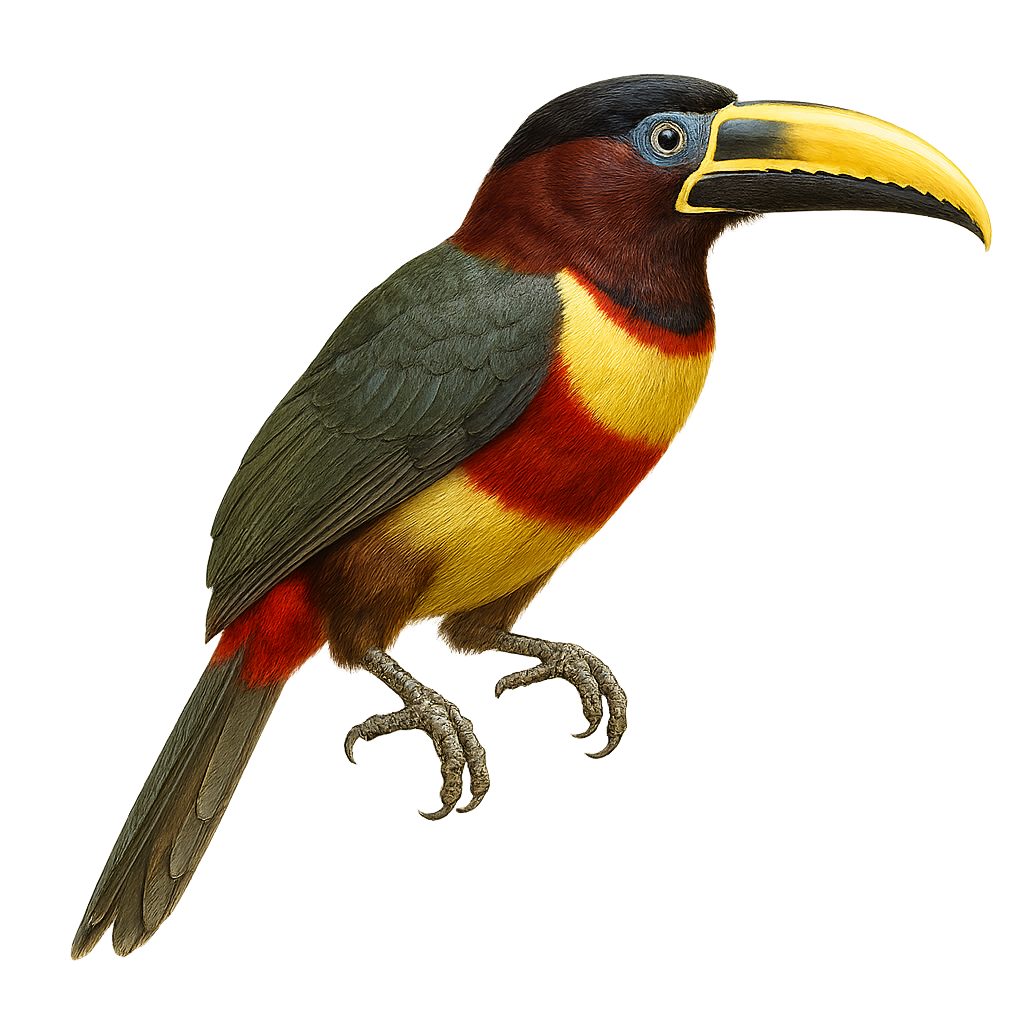Your wildlife photography guide.
Explore the red-necked aracari in detail, study its behavior, prepare your shots.
Where to observe and photograph the red-necked aracari in the wild
Learn where and when to spot the red-necked aracari in the wild, how to identify the species based on distinctive features, and what natural environments it inhabits. The WildlifePhotographer app offers tailored photography tips that reflect the red-necked aracari’s behavior, helping you capture better wildlife images. Explore the full species profile for key information including description, habitat, active periods, and approach techniques.
Red-necked Aracari
Scientific name: Pteroglossus bitorquatus

IUCN Status: Near Threatened
Family: RAMPHASTIDAE
Group: Birds
Sensitivity to human approach: Suspicious
Minimum approach distance: 10 m
Courtship display: October to December
Incubation: 15-17 jours
Hatchings: October to January
Habitat:
Tropical rainforests, forest edges
Activity period :
Primarily active during the day, with peak activity in the morning and late afternoon.
Identification and description:
The Red-necked Aracari, or Pteroglossus bitorquatus, is a colorful bird from the Ramphastidae family, native to the tropical rainforests of South America, particularly Brazil. It is distinguished by its vibrant plumage, with a black head, bright red neck, and olive-green body. Its long, curved bill, typical of toucans, features colorful patterns. This bird measures about 35 to 40 cm in length and weighs between 150 and 200 grams. It lives in small groups and primarily feeds on fruits, but also insects and small vertebrates. The Red-necked Aracari plays a crucial role in seed dispersal, thus contributing to forest regeneration.
Recommended lens:
400mm – adjust based on distance, desired framing (portrait or habitat), and approach conditions.
Photography tips:
To photograph the Red-necked Aracari, it is advisable to use a telephoto lens of at least 400mm to capture detailed images without disturbing the bird. Look for areas where fruits are abundant, as these birds are often seen feeding. Be patient and discreet, as although they are suspicious, they can get used to your presence if you remain still. Take advantage of the natural morning light to achieve vibrant colors and good contrast in your photos.
The WildlifePhotographer App is coming soon!
Be the first to explore the best nature spots, track rutting seasons, log your observations, and observe more wildlife.
Already 1 432 wildlife lovers subscribed worldwide

